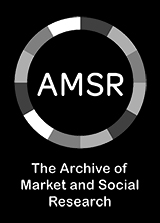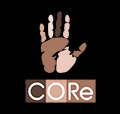Calling Young Researchers: Let’s Help Gamify Our Industry
25 August 2016
Daniel Tralman, Research Manager at Northstar UK
Two of the biggest challenges for the modern day researcher are to engage with research participants in an exciting way and to access thoughts that consumers are unable to rationally articulate. Both of these hurdles can be overcome by adopting game techniques into research design. Despite being a potential solution to these hurdles, research gamification is still – according to the GRIT Report – a niche method, used only by 27% of researchers.
This is a call to researchers under 30 to start to push gamified methods in research design. This call poses two questions: why should this fall to researchers under 30? And what are the aspects of psychology which we can include in our game design?
Many researchers under 30 have been brought up through the golden age of gaming – a period where computer consoles have taken over the entertainment sphere, gameshows have spread themselves across our TV channels and our favourite, but yet cumbersome, board games are now playable on a mobile phone. Our proximity to all of this for such a vast proportion of our lives makes us well positioned to implement game thinking into our research design. But how can we go from Sonic to surveys and Family Fortunes to focus groups?
Here are a couple of techniques grounded in psychology that can be incorporated into research games and tasks not only to increase engagement, but also to help us tap into respondents’ intuitive and implicit thoughts – essentially, accessing the unconscious.
Time Pressure
By enforcing time pressured tasks onto research participants, rationalised responses are abandoned in favour of more intuitive and emotional thinking – the faster the response, the more intuitive and emotive it is likely to be.
Divergent Thinking
By removing barriers that research is often limited by – sector parameters, competitive sets etc. – and allowing research participants to discuss adjacent categories and areas external to the core of the research, we open the doorway for a much wider level of consumer thinking. This delivers the researcher a vast quantity of information and free associations, often allowing a much bigger picture of the concept or idea we are discussing to be drawn, giving greater context to more focussed discussions.
Deconstruction
Often research participants struggle to deal with ‘big ideas/concepts’. However, by breaking these big concepts down into component parts it is possible to obtain an unobtrusive and genuine read on beliefs and opinions. This then means that we, the researcher, can piece these pieces back together in order to get the more holistic picture we need to effectively feed back to our clients.
Funnelling
The best way to garner a fair evaluation – of a brand, product or concept – often lies in understanding its relative importance. This means that often asking the most direct question about our ‘end point’ can sometimes result in research participants stating they simply don’t care about the key topic of our conversation. However, via a series of indirect questions that dig away at the centre of the subject we are discussing, it is often possible to get to the conversation around our ‘end point’ in a way that positions it as something within the participant’s consideration set.
These four areas represent some of the techniques that can be incorporated into gamified research design to re-engage our participants and get more meaningful and insightful feedback. The next question is, how do we practically and visually bring these to life?
Stay tuned for part 2.
Daniel Tralman, Northstar Research Partners
Get the latest MRS news
Our newsletters cover the latest MRS events, policy updates and research news.











0 comments